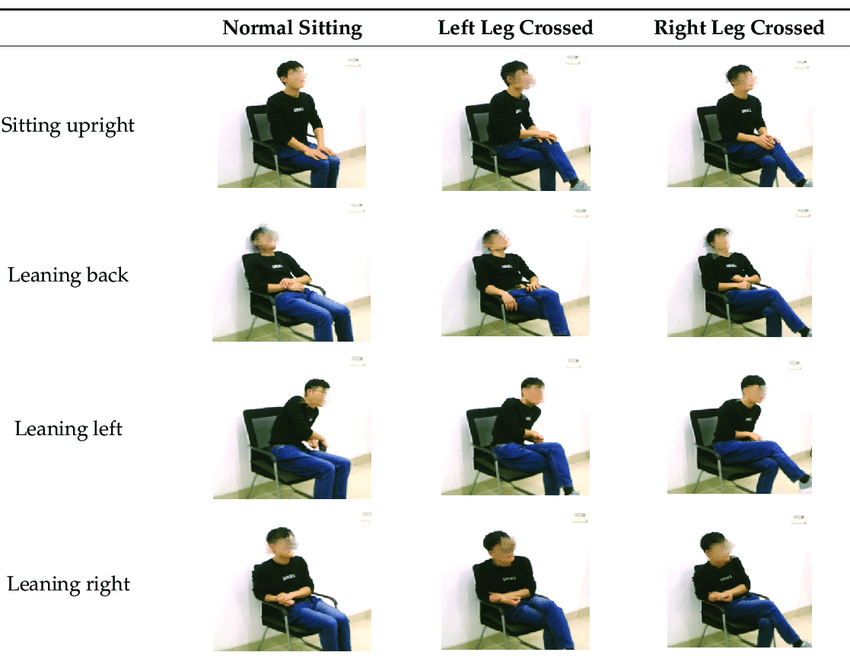Sitting Position Names: A Complete Guide to Common Postures

Introduction
Sitting is a natural part of daily human life, yet we rarely pay attention to how we sit or what each posture is called. From formal seating arrangements to yoga practices and everyday relaxation, each sitting position name serves a specific purpose. Understanding these names helps in choosing the right posture for comfort, health, and culture.
This guide explores the most well-known sitting position names, their meanings, and how they are used across different activities and traditions.
1. Cross-Legged Sitting (Sukhasana)
Cross-legged sitting, also known as Sukhasana in yoga, involves sitting with your legs folded over one another and your back straight. This posture is peaceful and stable, often used in meditation and spiritual practices.
Common Uses:
-
Yoga and meditation
-
Cultural and informal seating
-
Spiritual and breathing exercises
2. Lotus Position (Padmasana)
The lotus position is an advanced version of cross-legged sitting. Called Padmasana in Sanskrit, it involves placing each foot on the opposite thigh. It promotes balance, focus, and energy flow.
Common Uses:
-
Deep meditation
-
Yoga practice
-
Eastern religious traditions
3. Seiza (Japanese Kneeling)
Seiza is a traditional Japanese sitting posture. One kneels on the floor with the tops of the feet flat and sits back on the heels. The spine remains erect, and hands are usually placed on the thighs.
Common Uses:
-
Japanese tea ceremonies
-
Martial arts
-
Cultural etiquette
4. Chair Sitting (90-Degree Position)
This is the most common posture in modern environments. The chair sitting position keeps knees at a 90-degree angle, feet flat, and the back supported by the chair.
Common Uses:
-
Office work
-
Dining and travel
-
Studying and meetings
5. Squatting Position
In the squatting position, the knees are bent, and the hips are lowered near the heels with the feet flat on the ground. It is natural for many and common in cultures where ground-level seating is preferred.
Common Uses:
-
Waiting or resting
-
Outdoor activities
-
Toileting in some regions
6. W-Sitting
W-sitting is when the person sits on the floor with their knees bent and legs spread behind, forming a "W" shape. It is common among children, though not ideal for long durations.
Common Uses:
-
Floor play
-
Early childhood habits
7. Side Sitting
In side sitting, both legs are bent and positioned to one side of the body while sitting on the floor. It is often seen in formal or traditional gatherings.
Common Uses:
-
Cultural events
-
Ceremonial seating
-
Formal greetings
8. Butterfly Position
The butterfly position involves sitting upright, with the soles of the feet pressed together and knees dropped to the sides. The name comes from the resemblance to butterfly wings.
Common Uses:
-
Stretching exercises
-
Yoga poses
-
Floor workouts
9. Criss-Cross Applesauce
This is a child-friendly term for cross-legged sitting, used mostly in educational settings. It teaches children to sit still in a comfortable and controlled manner.
Common Uses:
-
Storytime
-
Class activities
-
Group discussions
10. Half-Lotus Position
The half-lotus position is a more accessible version of the full lotus. One leg is placed on the opposite thigh, while the other leg rests beneath. It is suitable for beginners in meditation.
Common Uses:
-
Beginner yoga
-
Guided meditation
-
Breathing practices
11. Reclining Sitting
Reclining sitting involves leaning back with support, typically in a relaxed manner. It can reduce spinal stress and promote comfort.
Common Uses:
-
Watching TV or movies
-
Lounging
-
Casual settings
12. Sitting with Legs Outstretched
In this position, the person sits with legs extended straight out in front. It is relaxed but can place tension on the lower back if unsupported.
Common Uses:
-
Beach or ground rest
-
Yoga stretches
-
Relaxed environments
13. Tailor Sitting
Similar to cross-legged, the tailor sitting position involves letting the knees drop lower and the hips open naturally. It’s ideal for gentle stretching and natural spine alignment.
Common Uses:
-
Prenatal classes
-
Meditation
-
Cultural gatherings
14. Z-Sitting
Z-sitting happens when one leg is folded in front and the other bent behind. It forms a "Z" shape and is often used in stretching or flexibility exercises.
Common Uses:
-
Dance warmups
-
Flexibility routines
-
Floor-based fitness
Why Knowing Sitting Position Names Matters
Understanding different sitting postures can help you improve posture, reduce physical strain, and adapt comfortably to cultural or functional environments. It also allows instructors, trainers, and teachers to communicate clearly when guiding physical or meditative exercises.
Benefits include:
-
Better posture awareness
-
Improved focus in meditation or study
-
Prevention of back or joint issues
Final Thoughts
Whether you're working, meditating, stretching, or simply relaxing, your sitting position affects your comfort, health, and energy. By learning these sitting position names, you empower yourself to sit more consciously, respectfully, and effectively—no matter the situation.
This guide offers a balanced view that blends health, culture, and mindfulness. Choose your posture wisely—your body and mind will thank you.
more related articles, visit here
- Art
- Causes
- Crafts
- Dance
- Drinks
- Film
- Fitness
- Food
- Games
- Gardening
- Health
- Home
- Literature
- Music
- Networking
- Dating & Match Making
- Party
- Religion
- Shopping
- Sports
- Theater
- Wellness


